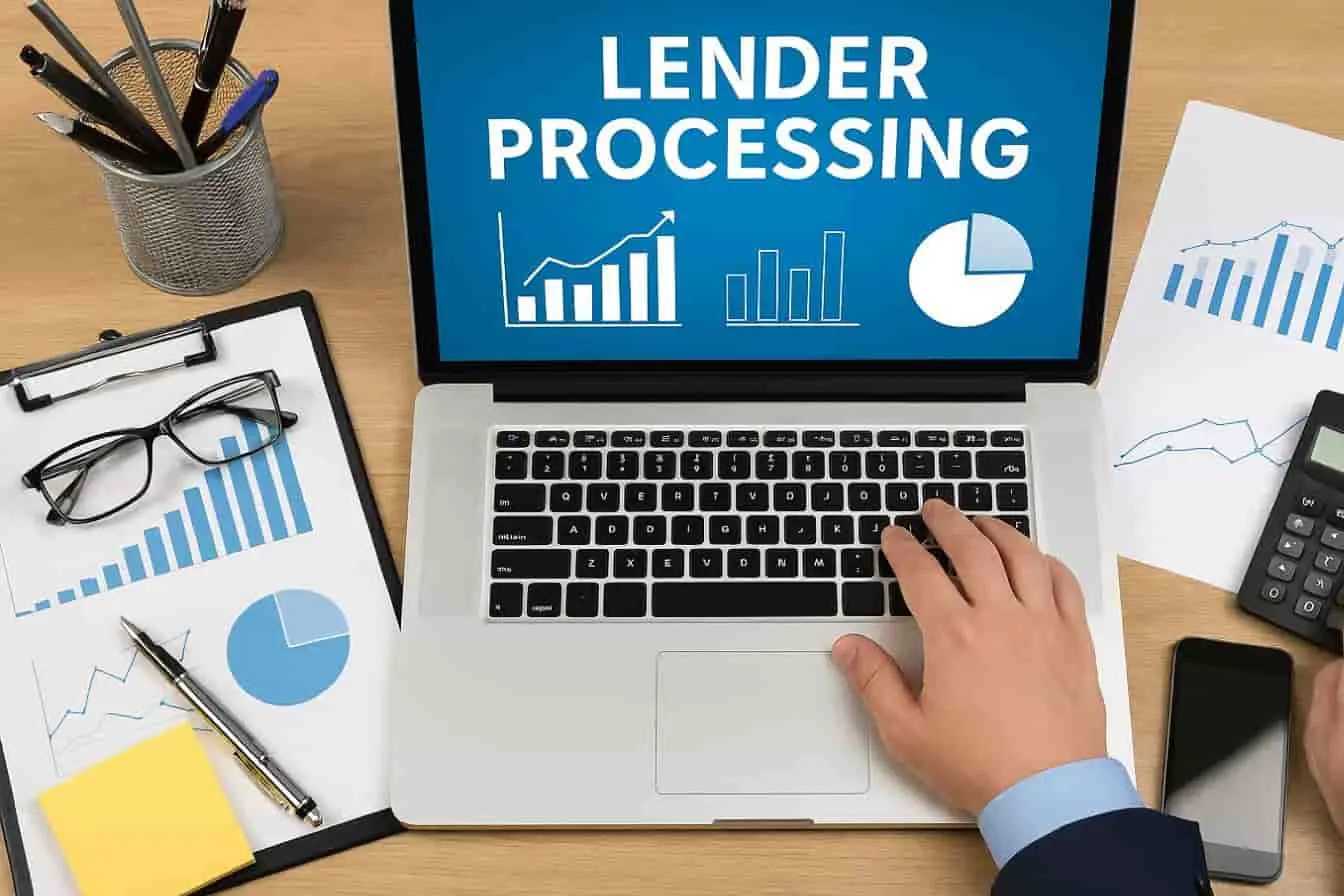Introduction to Lender Processings
When people talk about “lender processings,” they’re referring to the entire behind-the-scenes workflow that happens from the moment someone applies for a loan until the loan is either approved, denied, or funded. Even though most borrowers only see a few parts of the experience — filling out forms, sending documents, maybe answering a few phone calls — there is actually a huge system operating in the background. This system includes technology tools, compliance checks, underwriting procedures, communication steps, and quality control operations that lenders must follow to keep everything accurate and legally sound.
Lender processings matter because they directly affect how quickly someone can receive funding. Whether the loan is for a house, a car, a small business, or a personal emergency, smooth processing can mean the difference between getting approved in a few hours versus waiting weeks. A well-designed lender processing workflow also protects the lender from fraud, minimizes financial risks, and ensures compliance with strict policies established by government bodies and industry regulators. So the process isn’t just about analyzing a borrower — it’s also about protecting the entire lending ecosystem.
What makes lender processing interesting is how drastically it has evolved in recent years. Years ago, nearly everything was done manually: credit checks were slower, documentation took days to verify, and lenders relied heavily on physical paperwork. Today, digital automation, AI tools, online borrower portals, and cloud-based lending systems have revolutionized the entire chain. Because of this shift, lender processings have become faster, more consistent, and far more transparent. Borrowers now expect instant decisions and lenders must adapt to meet those expectations.
the Core Stages of Lender Processings
Most lending organizations follow a similar workflow, even though the technology and tools may differ. The core stages typically include application intake, document collection, verification, underwriting, compliance review, decisioning, and final funding. Each stage plays a crucial role, and skipping even one step can lead to massive financial risk for the lender. That’s why the process is built like a chain: every link must be strong or the whole structure weakens.
Application intake is usually the borrower’s first interaction with the lender. The processing team collects essential details like income, employment, address history, and the purpose of the loan. What people don’t often realize is that this information doesn’t just sit on a form — it’s fed directly into automated systems that start analyzing risk almost instantly. Some lenders use advanced algorithms to perform “soft approvals” based on early data before moving deeper into the review.
After intake comes the verification stage, which is one of the most labor-intensive parts of lender processings. Here, the lender must verify documents such as pay stubs, tax forms, bank statements, identity details, and property information if the loan involves real estate. Depending on the type of loan, additional documents like business financials, collateral details, or insurance records may be required. Verification ensures that the borrower’s claims are legitimate. Without this step, the lender could expose themselves to fraud, identity theft, or financial inaccuracies. Once verification is complete, the file moves to underwriting, where deeper evaluations take place.
The Role of Underwriting in Lender Processings
Underwriting is the backbone of lender processings. This is where the lender decides how risky the borrower is and whether the loan should move forward. Underwriters are trained professionals — or sometimes automated underwriting systems — that examine every piece of data collected during the earlier stages. They evaluate credit history, income stability, debt ratios, and repayment ability. This step is far more than a simple credit score check. Underwriters look for patterns, inconsistencies, and signs that indicate whether the borrower poses a high or low financial risk.
During underwriting, the lender also determines the exact terms of the loan. That means interest rates, repayment schedules, collateral requirements, and any extra conditions the borrower must meet before funding. For example, a mortgage underwriter may require the borrower to provide proof of additional savings or insurance documentation before approving a home loan. A business loan underwriter might ask for a revised financial statement or an updated profit-and-loss report to evaluate cash flow more accurately.
In modern lending operations, many underwriters rely on automated systems to handle the initial screening. Automated underwriting significantly speeds up the lender processing timeline because it can instantly detect major red flags or inconsistencies. However, human underwriters still play a critical role, especially for complex or high-value loans. Human judgment is necessary when deciding whether nuanced or borderline cases should be approved. That combination of automation and expertise allows lenders to reduce errors, improve speed, and maintain sound decision-making.
Technology’s Impact on Modern Lender Processings
Technology has completely reshaped the lending landscape, and lender processings now use an impressive blend of automation, digital platforms, AI, and verification tools. One of the biggest advancements is the use of automated underwriting systems, which can assess borrower data in seconds. This reduces reliance on manual evaluations and eliminates many bottlenecks that used to slow lenders down. AI tools can analyze income stability, detect fraud patterns, and even predict default likelihood based on borrower behavior models.
Modern lender processings also rely heavily on digital document management systems. Borrowers can now upload documents directly through online portals instead of mailing or emailing files back and forth. These systems automatically categorize, label, and verify documents with optical character recognition (OCR) technology. This reduces errors and prevents lost documentation — a common problem in traditional lending offices. Automation also keeps everything organized for compliance audits.
Another key advancement is electronic signatures and remote verification. Borrowers no longer need to visit physical offices to sign paperwork or verify identity. With e-sign systems and digital identity software, lenders can authenticate borrowers securely and legally within minutes. The entire process becomes smoother, faster, and more convenient for both parties. Because of these innovations, lender processings have transformed from slow, manual workflows into streamlined digital pipelines.
Common Challenges Faced in Lender Processings
Even with advanced technology, lender processings still face many challenges. One of the biggest issues is incomplete documentation. Borrowers often delay submitting required forms, which stalls the entire workflow. Some don’t understand what documents are needed, while others fail to provide accurate or updated versions. Because of this, lender processing teams frequently spend significant time chasing missing files, requesting clarifications, or re-verifying information that wasn’t clear the first time.
Another common challenge is regulatory compliance. Lenders must follow strict government rules that vary by loan type, region, and financial sector. Compliance isn’t a one-time check — it’s an ongoing requirement throughout the entire lifecycle of lender processings. Mistakes can lead to severe penalties, legal risks, or even shutdowns. This makes the work of processing specialists and compliance officers extremely important, as they must ensure every file meets legal standards before funding.
In addition to borrower and regulatory complexities, lenders also face challenges with internal workflow coordination. Many departments — intake teams, processors, underwriters, quality check staff, funders, and auditors — all handle different parts of the process. If communication breaks down, files can become delayed or mismanaged. This is why many modern lenders invest in integrated loan management systems that keep all teams aligned and updated in real time.
Why Lender Processings Matter for Borrowers
From the borrower’s point of view, lender processings directly impact approval speed, loan terms, and overall experience. A streamlined and efficient process means borrowers can receive funding faster, especially during emergencies or time-sensitive situations like closing on a home. When lender processing steps are organized and well-managed, borrowers don’t have to constantly upload new documents, wait for callbacks, or face confusing communication gaps.
Clear lender processing also reduces stress for borrowers. When the lender provides transparency — such as online status updates or automated notifications — borrowers know exactly what to expect. They can track progress and understand what steps remain, which builds trust in the lender. This transparency also helps borrowers prepare documents in advance, reducing delays that would otherwise extend the approval timeline.
Another important benefit is fairness. Standardized lender processings help ensure all applicants are evaluated using the same criteria. This prevents bias or inconsistent decision-making. Automation also reduces human errors, making approvals more reliable. When lender processings are handled correctly, borrowers gain access to fair evaluations, accurate decisions, and loan terms that match their financial profile.
Best Practices for Improving Lender Processings
To optimize lender processings, financial institutions often follow a set of best practices that make the workflow more efficient and consistent. The first major practice is adopting automation wherever possible. Automated checks for income, identity, and credit data reduce manual workloads and speed up underwriting. This allows lender teams to focus on complex cases that truly need human expertise instead of spending hours on basic repetitive tasks.
Another best practice is improving borrower communication. This includes sending automated reminders for missing documents, offering clear instructions on what files are required, and maintaining an online portal where borrowers can track the loan’s status. When communication is clear and consistent, borrower satisfaction increases significantly, and processing delays become much less frequent. Many lenders also implement intelligent chatbots or support assistants to answer common borrower questions instantly.
The final best practice involves establishing strong compliance and quality control systems. Compliance requirements can change frequently due to shifting regulations, so lenders must keep their teams educated and updated. Quality control ensures every file is processed correctly before moving to the next stage. Many lenders schedule periodic audits, use checklists, and integrate compliance checks directly into their workflow software to reduce human oversight errors.
The Future of Lender Processings
The future of lender processings is headed toward full automation and ultra-fast decision-making. AI-powered risk assessment models will become even more accurate, using data beyond credit scores — such as spending behavior, income fluctuation trends, and other alternative data sources. This will allow lenders to make smarter, more personalized lending decisions that reflect each borrower’s real financial habits.
Blockchain technology is also entering the world of lender processings. It promises secure, tamper-proof loan records, faster documentation verification, and safer identity management. With blockchain, lenders can validate information instantly without relying on multiple third-party channels. This can reduce fraud risks and strengthen trust between lenders and borrowers.
Another major trend is hyper-personalization. In the future, lender processings may automatically adjust loan terms and offers based on the borrower’s financial profile, goals, and performance patterns. This means borrowers may receive highly customized interest rates, repayment schedules, and loan products tailored to their exact needs. Overall, the future points toward smoother, smarter, and more intuitive lending experiences.
Final Thoughts
Lender processings may seem complex at first glance, but they are the foundation of modern lending. From application intake to underwriting and final funding, every step plays a crucial role in making the loan system fast, fair, and safe. As technology continues to advance, these processes will become even more efficient, helping lenders operate more smoothly and helping borrowers access funds with less stress and better transparency.





